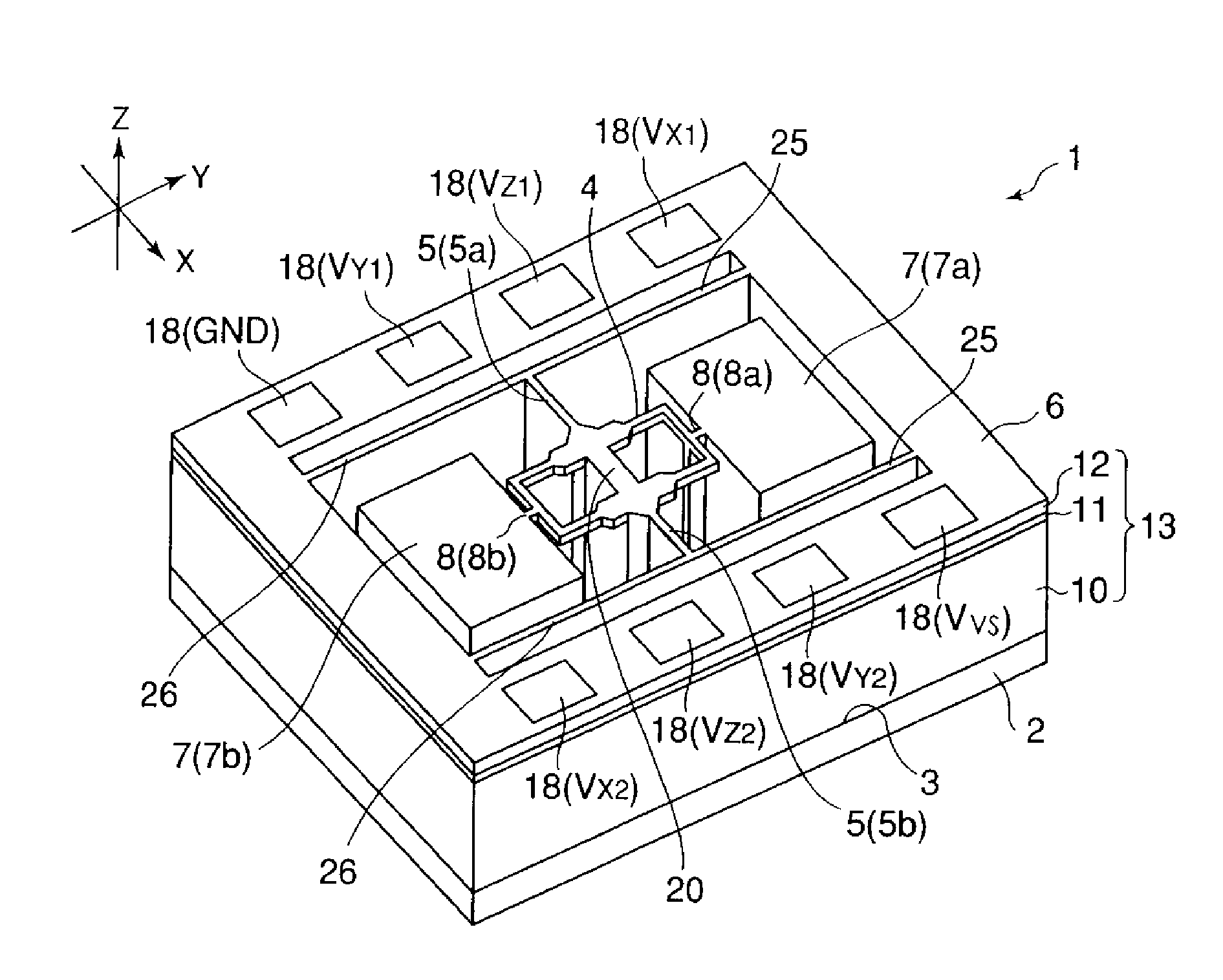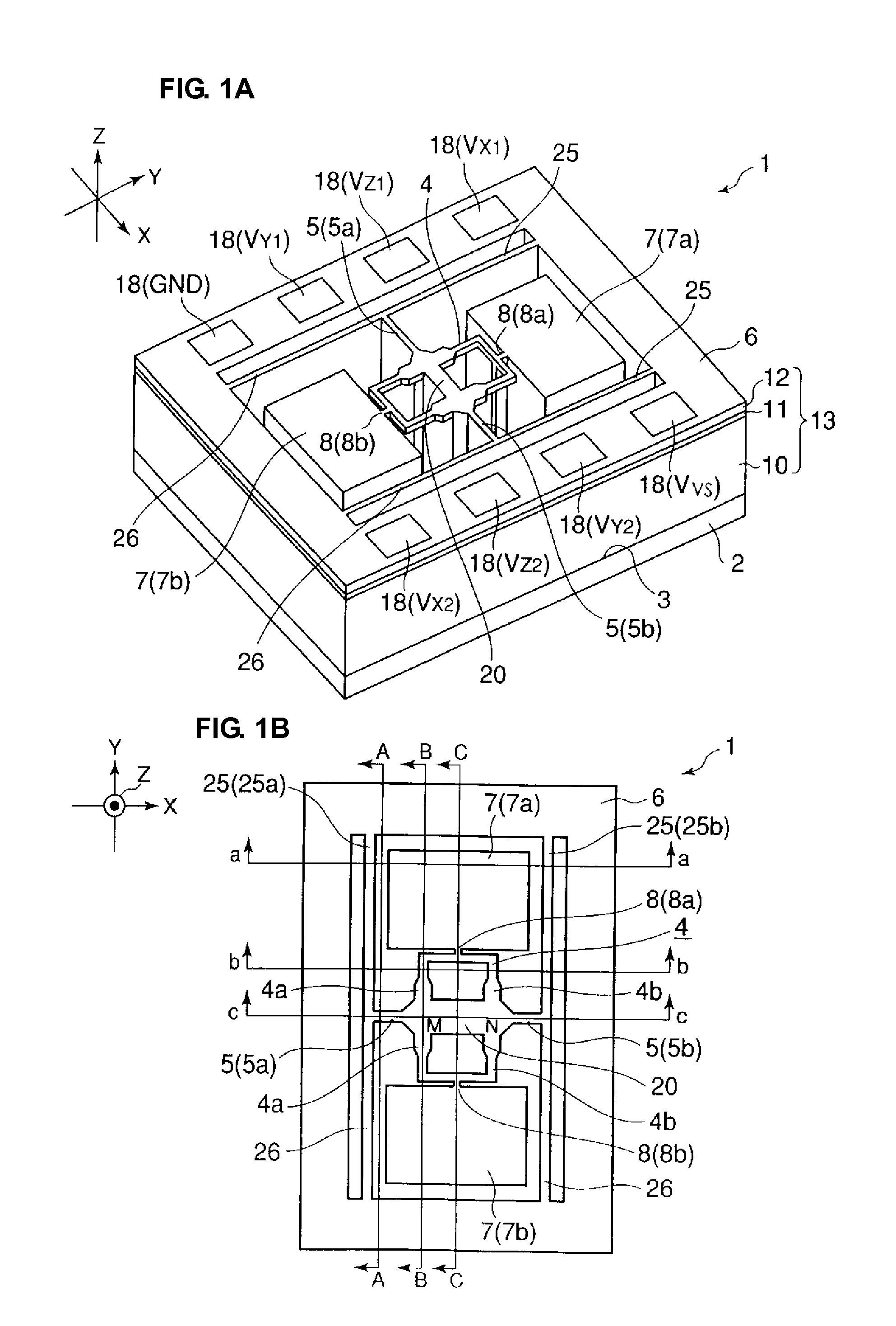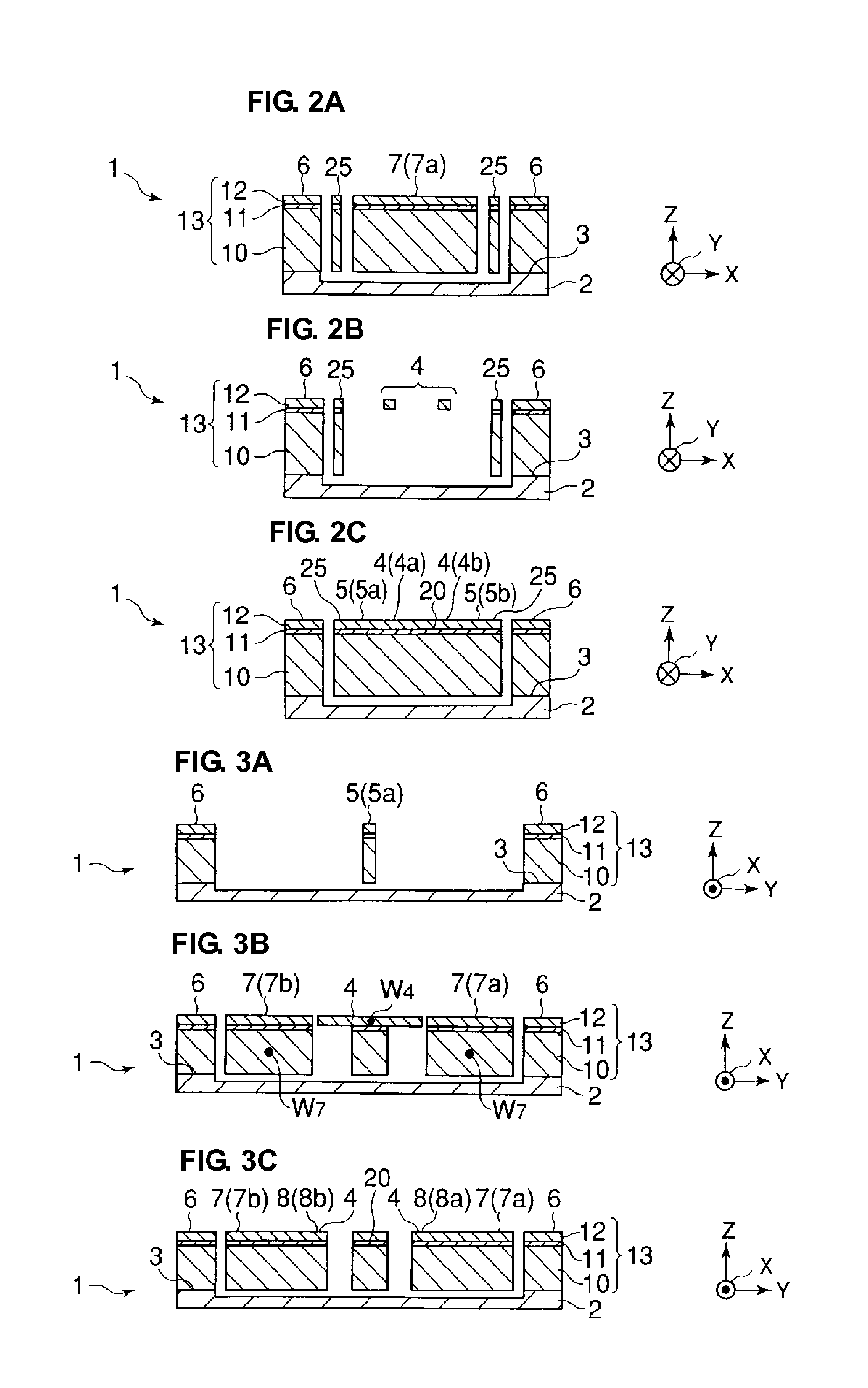Acceleration sensor
a sensor and acceleration technology, applied in the field of acceleration sensors, can solve the problems of insufficient acceleration detection accuracy, difficult to dope phosphorus or boron at each location, and the voltage equivalent to those output when acceleration is applied, so as to reduce the size of the acceleration sensor, reduce the displacement of the beam portion caused by the displacement of the weight portion, and reduce the effect of acceleration sensor siz
- Summary
- Abstract
- Description
- Claims
- Application Information
AI Technical Summary
Benefits of technology
Problems solved by technology
Method used
Image
Examples
Embodiment Construction
[0064]Preferred embodiments of the present invention will be described below with reference to the drawings.
[0065]FIG. 1A is a schematic perspective view illustrating an acceleration sensor according to a preferred embodiment of the present invention. FIG. 1B is a schematic plan view illustrating the acceleration sensor shown in FIG. 1A. In FIG. 1B, electrode pads denoted by reference numeral 18 in FIG. 1A are omitted. FIG. 2A is a schematic sectional view of FIG. 1B taken along line a-a. FIG. 2B is a schematic sectional view of FIG. 1B taken along line b-b. FIG. 2C is a schematic sectional view of FIG. 1B taken along line c-c. In addition, FIG. 3A is a schematic sectional view of FIG. 1B taken along line A-A. FIG. 3B is a schematic sectional view of FIG. 1B taken along line B-B. FIG. 3C is a schematic sectional view of FIG. 1B taken along line C-C.
[0066]An acceleration sensor 1 according to the present preferred embodiment is capable of detecting accelerations in three axial direct...
PUM
 Login to View More
Login to View More Abstract
Description
Claims
Application Information
 Login to View More
Login to View More - R&D
- Intellectual Property
- Life Sciences
- Materials
- Tech Scout
- Unparalleled Data Quality
- Higher Quality Content
- 60% Fewer Hallucinations
Browse by: Latest US Patents, China's latest patents, Technical Efficacy Thesaurus, Application Domain, Technology Topic, Popular Technical Reports.
© 2025 PatSnap. All rights reserved.Legal|Privacy policy|Modern Slavery Act Transparency Statement|Sitemap|About US| Contact US: help@patsnap.com



